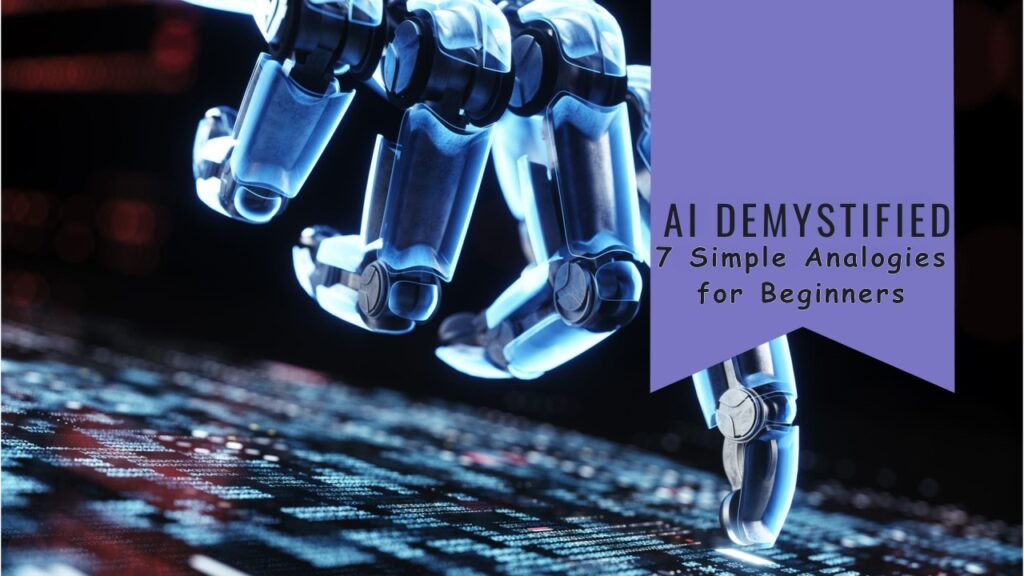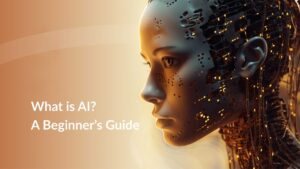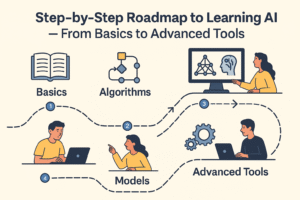
Why AI Feels Complicated—Until You See It Differently
For many people, the term artificial intelligence sounds like something from a sci-fi movie—futuristic, mysterious, and maybe a little intimidating. But here’s the truth: AI is just a smart tool that learns from examples and uses patterns to solve problems. The only tricky part? The tech jargon that wraps it up like an unreadable instruction manual.
That’s why analogies are magic. They take something new and connect it to something familiar. Instead of wading through algorithms and neural networks, we’re going to pull AI into your world—using everyday things you already understand.
So, let’s demystify AI once and for all with seven clear, funny, and relatable analogies.
1. AI as a Detective (Pattern-Finding Pro)
Picture Sherlock Holmes scanning a crime scene. He spots clues most of us would miss, connects them, and solves the case. AI works the same way—only it does it at lightning speed.
- Real-world example: Banking AI spots fraudulent charges by detecting unusual spending patterns.
- Why it works: Just like Holmes doesn’t memorize every case but uses deductive reasoning, AI learns from past examples to identify future patterns.
2. AI as a Puppy (Learning by Example)
You can’t teach a puppy with a textbook—you show it what you want. AI learns the same way. Feed it enough examples, and it figures things out.
- Example: Show AI thousands of cat images, and it learns to spot cats in new photos.
- Pro tip: Quality training matters. Bad data is like teaching a puppy the wrong trick—it’ll keep repeating the mistake.
3. AI as a Librarian (Organizing & Retrieving Information)
Think of the most efficient librarian who can instantly hand you the book you’re thinking of—even if you barely remember the title.
- Example: Google Search acts like that librarian, organizing and ranking billions of web pages.
- Lesson: AI thrives when it can arrange, categorize, and retrieve massive amounts of information in seconds.
4. AI as a Fancy Label-Maker (Classification)
Imagine a giant warehouse of unlabeled boxes. Your AI label-maker scans each one, instantly tagging them with accurate labels.
- Example: In medicine, AI classifies X-rays as “healthy” or “needs attention” after learning from thousands of scans.
- Key point: Classification is one of AI’s superpowers—it’s fast, consistent, and scalable.
5. AI as a Rocket (Data, Hardware, and Expertise)
Rockets need fuel (data), strong materials (hardware), and a skilled crew (engineers + algorithms). Take away one, and you’re grounded.
- Example: Chatbots like ChatGPT “launch” successfully because they have huge datasets, powerful processors, and smart design.
- Takeaway: Good AI is a team effort—no single ingredient can do it alone.
6. AI as a Magic Genie (Fulfilling Your Prompts)
Ask, and AI delivers—just be specific. Like a genie, it takes your words literally.
- Example: If you say “Give me the fastest route,” it might choose a road full of potholes unless you specify safest or smoothest.
- Tip: Better prompts = better AI responses.
7. AI’s Brain as a Kangaroo Pouch (Temporary Memory)
Imagine a kangaroo pouch where data is stored temporarily until it’s needed. That’s AI’s short-term memory in action.
- Example: Voice assistants store your command (“Play 80s rock”) just long enough to process and execute it.
- Fact: AI doesn’t always store data permanently—it processes and moves on.
Clearing Up Common AI Myths
The ELIZA Effect
Back in the 1960s, ELIZA mimicked conversation so well that people believed it understood them. It didn’t. Today, even advanced AI can sound human without actually “thinking.”
Weak AI vs. Strong AI
- Weak (Narrow) AI: Focused on one task (e.g., translating languages, recognizing faces).
- Strong (General) AI: Hypothetical—would match human intelligence across all tasks. We’re not there yet.
How to Explain AI to Anyone
- Kids: “It’s like a smart pet that learns from you.”
- Professionals: “It’s a tool that spots patterns and helps make decisions faster.”
- Older adults: “It’s like a helpful assistant who remembers and retrieves info instantly.”
- Skeptics: “It’s not magic—it’s just a lot of examples and clever rules.”
FAQ (Snippet-Optimized)
Q1: What is AI in simple terms?
AI is technology that learns from examples, recognizes patterns, and solves problems quickly.
Q2: Why use analogies to explain AI?
Analogies connect unfamiliar concepts to everyday experiences, making them easier to grasp.
Q3: Is today’s AI truly intelligent?
No—it performs specific tasks well but doesn’t think like humans.
Q4: How can I get better AI results?
Give clear, specific instructions—AI works best with precise prompts.
Q5: What’s the ELIZA effect?
It’s when we think a computer understands us because it responds like a human, even though it doesn’t.
Summary
When you break AI down into detectives, puppies, librarians, rockets, genies, and kangaroos, the mystery fades. You realize it’s not magic or sci-fi—it’s a smart, specialized tool that learns from data. And just like any tool, it’s only as good as the person using it.
So next time someone asks, “What exactly is AI?”, you can smile and say:
“It’s like a super-fast learner that never sleeps—kind of like a puppy with a PhD.”
Also Read: The Future of AI in India: Jobs, Skills & Opportunities


